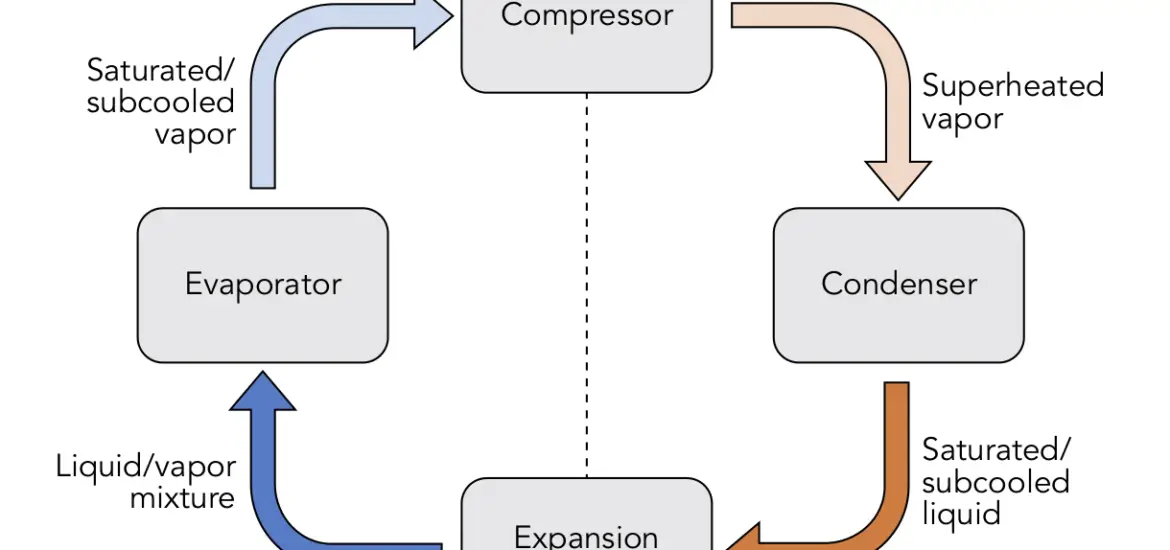Subcooling meter mastery is your ticket to a comfortable and energy-efficient home! As a homeowner, you might be wondering, “Why do I need to know about subcooling meters?” We’re here to help you understand the importance of these handy devices, how they work, and how to choose the right one for your HVAC/R system. Let’s dive in and become subcooling meter savvy together!

Table of Contents
Definition of Subcooling
Subcooling is the process of cooling a liquid refrigerant below its boiling point to improve the efficiency of the refrigeration cycle. It’s an essential part of making sure your HVAC/R system runs smoothly, keeps your energy bills down, and maintains a comfortable home environment.
Subcooling Meters
A subcooling meter measures the temperature and pressure of the refrigerant in your HVAC/R system, helping you determine the subcooling level. These handy gadgets ensure your system is operating at peak efficiency, saving you money and keeping you comfortable all year round.
Types of Subcooling Meters
Analog Meters
Analog meters are the old-school option, featuring dials and gauges. They’re affordable and reliable, but can be tricky to read and aren’t as accurate as digital alternatives. These meters work best for basic applications and smaller systems.
Digital Meters
Digital meters use electronic displays to provide accurate readings and are easier to use than analog meters. They offer better accuracy and often come with additional features. Digital meters are suitable for most residential and commercial applications.
Wireless/Bluetooth Meters
Wireless or Bluetooth meters connect to your smartphone or tablet, providing readings and advanced features through an app. These cutting-edge devices offer the best user experience, but can be more expensive. They’re perfect for tech-savvy homeowners and professionals alike.
Read our other articles on subcooling – Subcooling and Superheating: Easy Guide to Chilled Mastery
Key Components of a Subcooling Meter
Temperature Sensor
Temperature sensors in subcooling meters come in various types, such as thermocouples and resistance temperature detectors. These sensors need to be accurate and well-calibrated for reliable readings. Proper placement is also crucial for accurate temperature measurements.
Pressure Sensor
Pressure sensors, like strain gauge or piezoelectric sensors, measure refrigerant pressure in your system. They must be accurate and calibrated to ensure precise readings. Proper placement and best practices are essential for optimal performance.
Display
Displays on subcooling meters range from analog dials to digital screens and even smartphone apps. Readability and user interface are key factors to consider, as well as any customization options or additional features.
How to Use a Subcooling Meter
Preparation
Before using your subcooling meter, assemble the device, select the appropriate refrigerant for your HVAC/R system, and set up the meter in the proper location. Remember, preparation is key for accurate readings and optimal system performance.
Measurement
Connect the meter to your HVAC/R system, then read and interpret the subcooling values. Troubleshoot any issues that arise, and always consult the manufacturer’s guidelines or a professional if you’re unsure about anything.
Analysis and Adjustment
After measuring the subcooling level, analyze the data to determine if adjustments are needed. Adjust the refrigerant charge or expansion valve as required, ensuring your system runs smoothly and efficiently.
Maintenance and Calibration of a Subcooling Meter
Regular Maintenance
Keep your subcooling meter in tip-top shape by cleaning and inspecting it regularly. Store it according to the manufacturer’s recommendations and replace any damaged or worn components as needed.
Calibration
Regular calibration is essential for accurate meter readings. Follow the manufacturer’s calibration methods and procedures, and adhere to recommended calibration intervals and best practices.
Conclusion
Importance of Subcooling Meters
Subcooling meters play a crucial role in maintaining efficient HVAC/R systems, saving you money, and ensuring a comfortable home environment. Don’t underestimate the power of a well-functioning subcooling meter!
Choosing the Right Meter
When selecting a meter, consider factors such as the type of meter, accuracy, ease of use, and features. Match the meter to your system requirements and personal preferences, and you’ll be well on your way to HVAC/R system success.